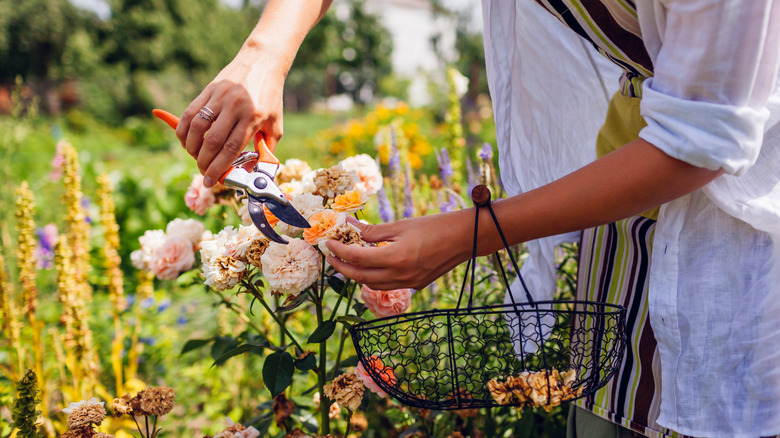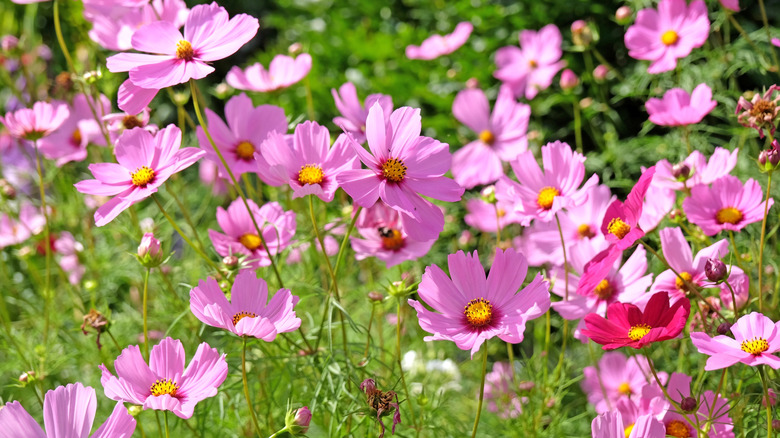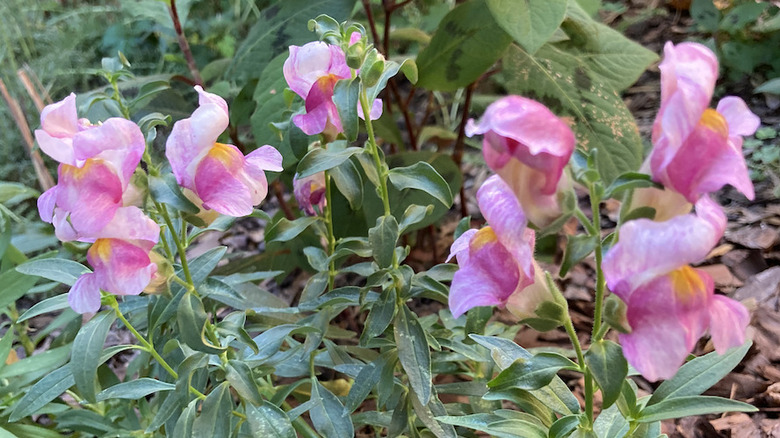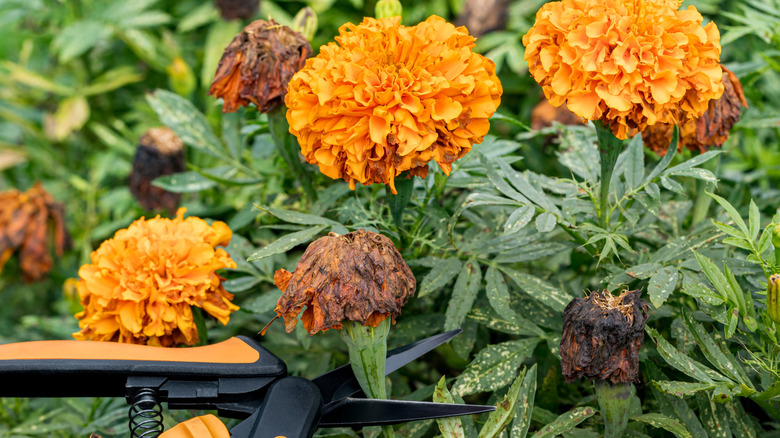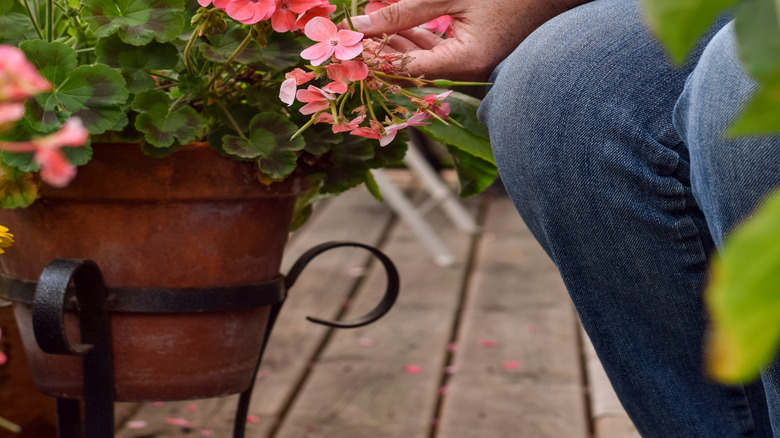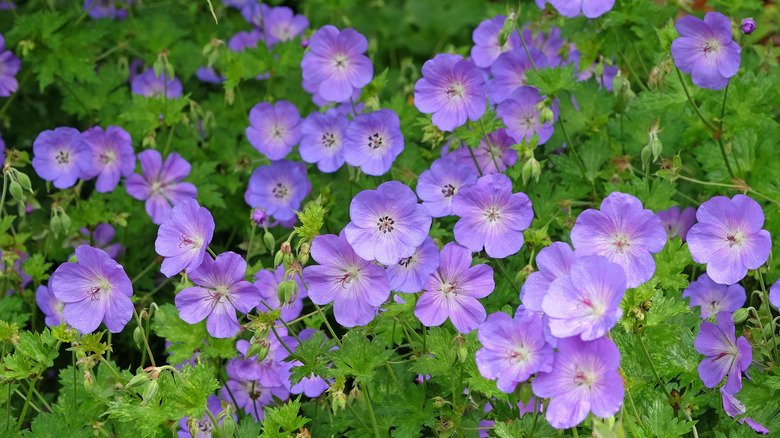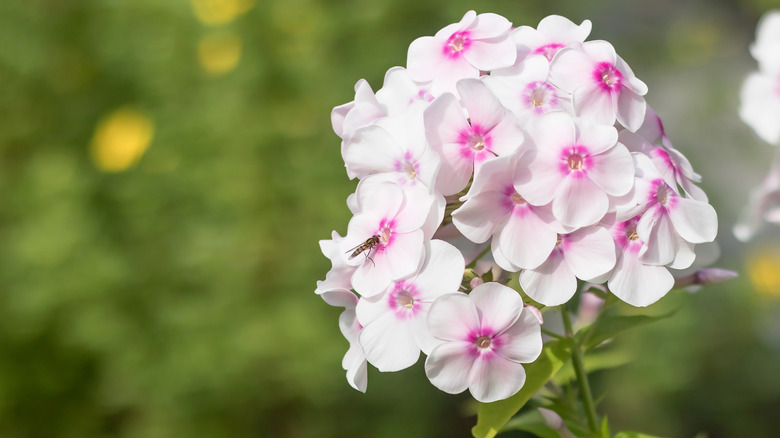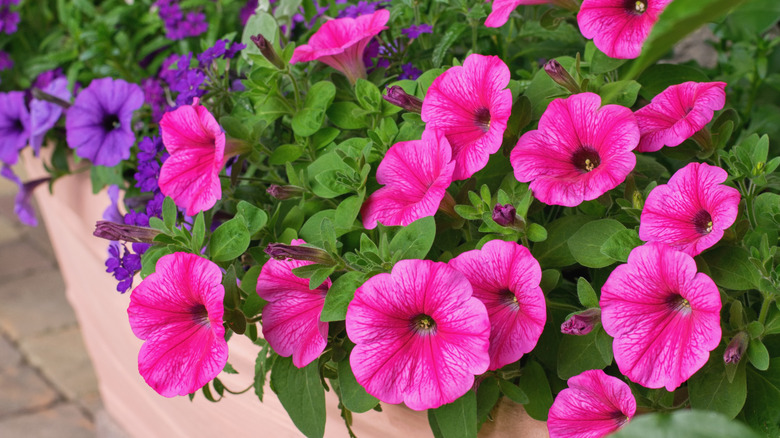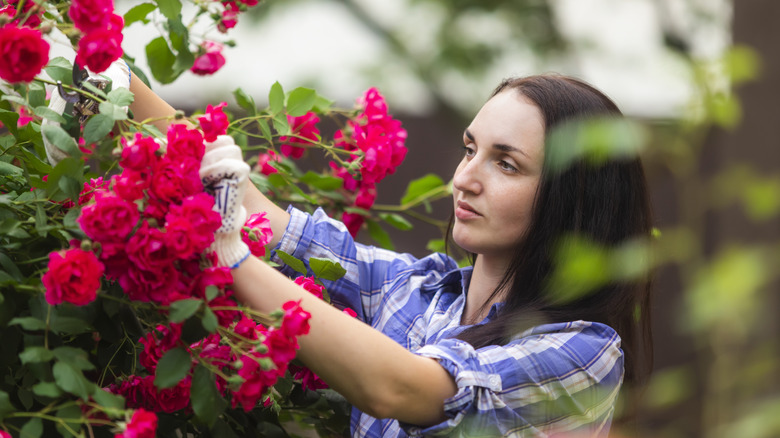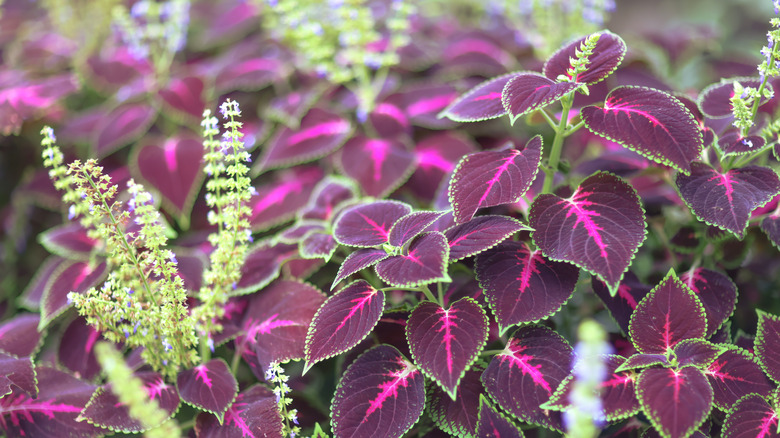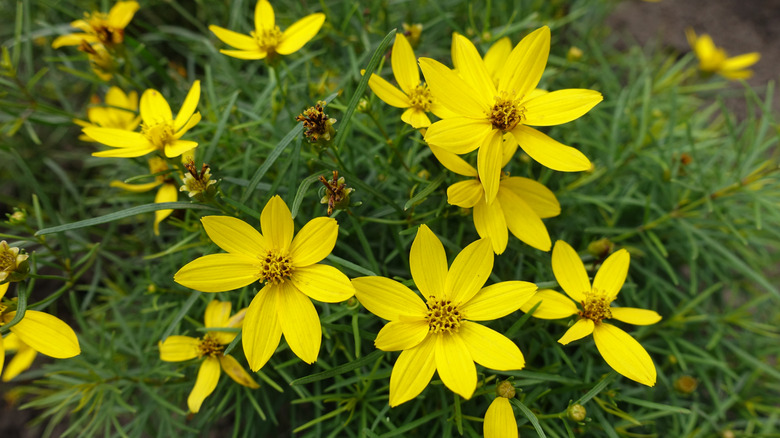12 Flowers You Should Deadhead In July For More Beautiful Blooms And Lasting Color
Deadheading is a necessary task in the garden to keep plants healthy and to prolong the blooming season. Many summer-blooming annuals and perennials hit their peak between late June and early August, and deadheading during the month of July is important to let the plant form new buds so it will continue providing flowers for the rest of the summer. There are some popular annuals and perennials that particularly benefit from deadheading in July for more beautiful blooms and lasting color — from marigolds to geraniums and roses.
Essentially, deadheading means removing dead plant material such as spent flowers, discolored foliage, and broken stems. Trimming off spent flowers stimulates the plant to form new buds and direct its energy into fresh growth. The length of time between deadheading and the formation of new buds can vary depending on the plant. Some summer-bloomers form new buds constantly, and will keep flowering even as you trim off dead flowers, while others may be bare of flowers for a couple of weeks while they form new buds after stems are sheared off. Summer-blooming plants tend to be very sturdy and can withstand intense heat and sun and rain, but letting them get overgrown can leave them looking leggy and bedraggled. So, get out your snips and shears and gently deadhead those spent flowers to keep your summer garden looking colorful, healthy, and happy.
Cosmos
Cosmos are a quintessential cottage garden favorite. The airy flowers sit atop sturdy stems with feathery foliage and provide delicate, colorful beauty for weeks in summer. They can be planted from seed indoors a few weeks before the last frost date, or purchased from nurseries, and sometimes cosmos will reseed in the garden. Cosmos usually start blooming in late June, so you should keep an eye on them and start deadheading in July to keep the plants neat and keep the blooms coming.
Daylilies
Species daylilies (Hemerocallis spp.), as opposed to orange "ditch lilies" (Hemerocallis fulva), you may notice have a range of flowering times. Some varieties like Stella D'Oro start blooming in June, then rebloom in late summer. Cutting spent flower stalks helps reblooming daylilies prepare for their next round of flowering. But all daylilies benefit from deadheading. This needs to be done often during the bloom season, because, true to their name, each flower only lasts about a day, so trim the spent ones to keep the plants neat.
Coneflowers
Many gardeners like to keep their coneflowers intact so the seeds will provide food for birds in autumn. However, since these blooming powerhouses produce flowers all summer long, you can deadhead them a bit in July and August to keep them neat, and not sacrifice too many seeds in autumn. Also, some varieties of coneflower don't have central seed cones (like many of the pom pom and double varieties), so these can be deadheaded freely to keep the plants looking good.
Snapdragons
Snapdragons come in a stunning assortment of colors and a range of sizes. The smaller ones can be deadheaded as the blooms start to dry and wither. The taller ones (like the Rocket or Chantilly varieties) get a strong center stem that blooms first, and then grows side stems that form more flower buds as the season progresses. By mid to late July, once the blooms fade on that center stem, it should be trimmed to direct energy to the side stems, which will then keep flowering well past first frost.
Marigolds
Marigolds are easy to grow and a staple annual for many gardeners. Some vegetable gardeners plant them near tomato plants for their insect-repelling properties, while others enjoy their bold, sunny colors in containers and beds. Once the first round of blooms starts to fade in July, you'll want to snip off the dead flowers so the plant will keep producing new buds; this will keep the flowers coming through autumn.
Geraniums
Annual geraniums (Pelargonium) are usually grown in containers, though they can also do well at the front of the garden border. Many plant enthusiasts loves these annuals for their vivid colors and long season of bloom. However, it's imperative to keep deadheading them throughout the season to keep the blooms coming. Just snip the flowerhead and this will encourage more buds and blooms. Discolored or dead leaves should also be trimmed off regularly.
Cranesbill geraniums
These perennial geraniums (Geranium macrorrhizum) are long-blooming flowers that provide bounteous colorful blooms in shades of blue, purple, pink, and white on trailing stems with attractive leaves. Once the first round of flowers starts to fade in early to mid-July, you can shear off the spent buds and cut back the stems by about ten or twelve inches. This not only neatens up the plants, but encourages new buds and a fresh round of blooming in a few weeks' time.
Phlox
Tall garden phlox is a great summer bloomer, and if you plant more than one variety with different blooming times, you can have gorgeous colorful flowers for weeks. Usually once a phlox flower head starts to fade, the whole thing goes pretty quickly, so there's no need to snip individual flowers — just prune the whole flowerhead at once. You can also trim off any leaves that turn brown or curled. Be aware that if you have powdery mildew on your phlox leaves, this may affect the plant's ability to flower for the season.
Petunias
These cheery annuals come in a huge range of colors (including several gorgeous pinks) and seem to bloom non-stop all season long. Removing the spent flowers is key to keeping petunias fresh and encouraging new blooms, and in July when it starts to get hot, petunia flowers will often start fading a bit faster. Towards the latter part of the season, some stems will stop producing buds, so if you see the stems looking lifeless or dry, just gently snip them back to keep the plant vibrant, and you'll get blooms until frost.
Roses
There are many different kinds of roses: shrub roses, hybrid tea roses, climbing roses, heirloom roses, Knockout roses — and all of them benefit from light deadheading throughout the season. Roses that bloom continually all summer, like Knockout roses, definitely perform better when they're deadheaded regularly, and will reward you with abundant blooms through fall. You should also prune rose bushes lightly to remove any discolored or damaged leaves or branches.
Coleus
Coleus are prized for their colorful foliage in a range of bold hues. These shade-loving annuals will provide easy color all season if you do two kinds of deadheading. Deadhead the flower stalks, which usually start appearing by late June or early July, depending on the size and maturity of your plants. These flower stalks grow throughout the season, so you need to keep snipping them off. The flowers aren't terribly attractive, anyway, and they draw energy from the vibrant foliage. You should also deadhead any leaves that look faded or ragged.
Coreopsis
Coreopsis (also known as tickseed) is a long-flowering summer perennial. But deadheading it will give you an even longer season of bloom. Most coreopsis starts blooming around mid to late June, and depending on weather conditions, the blooms last through mid July. (I find that extreme heat will cause the flowers to fade a bit more quickly, so keep the clumps watered). But deadheading the spent flowers through the month of July will keep new buds coming and a second round of bloom will follow, providing color into autumn.
